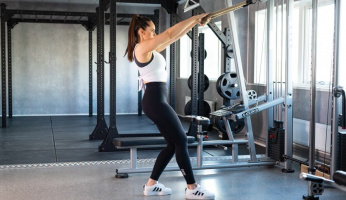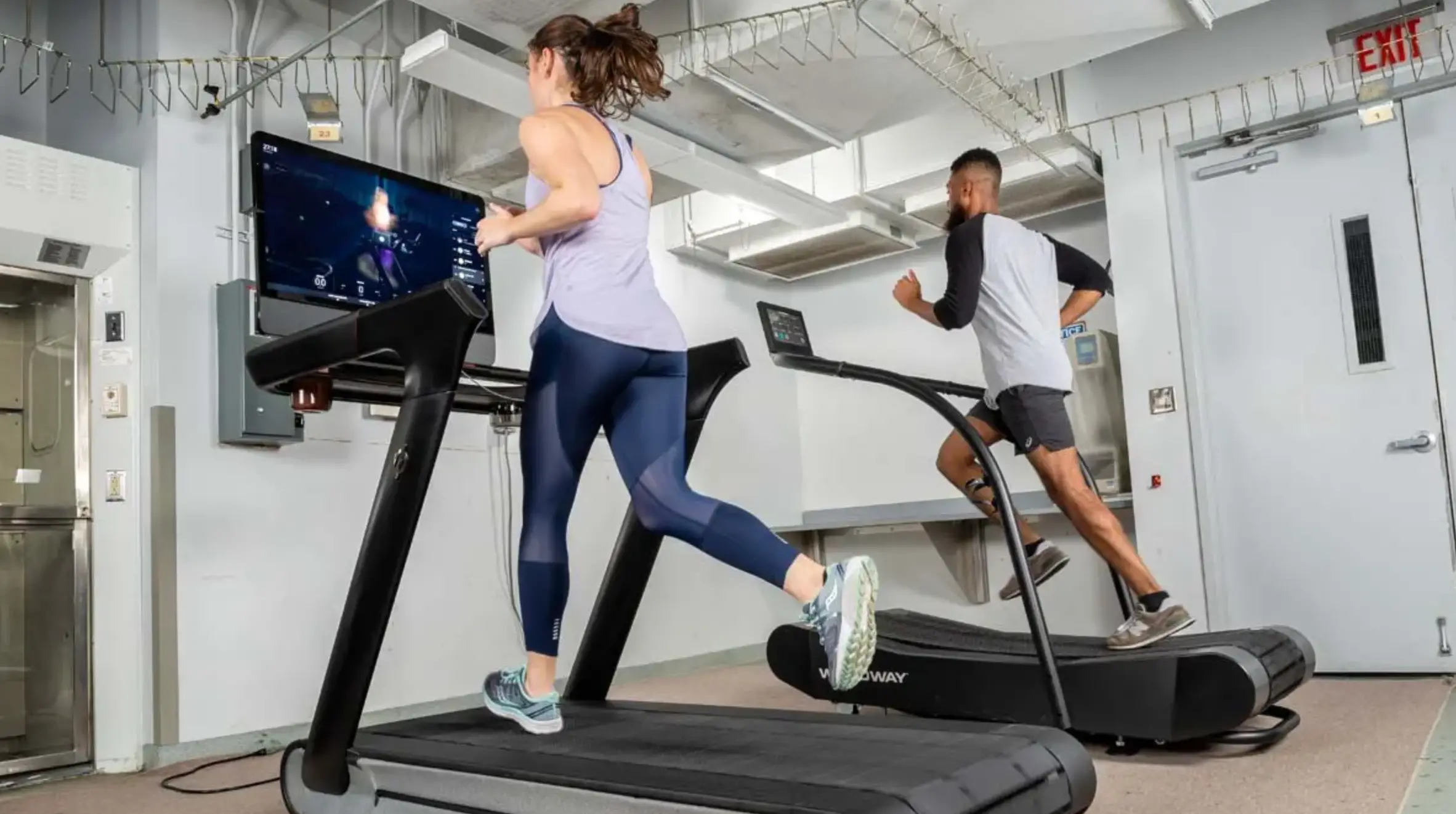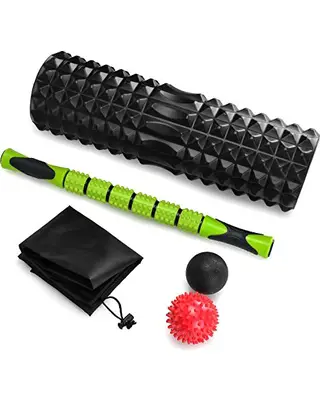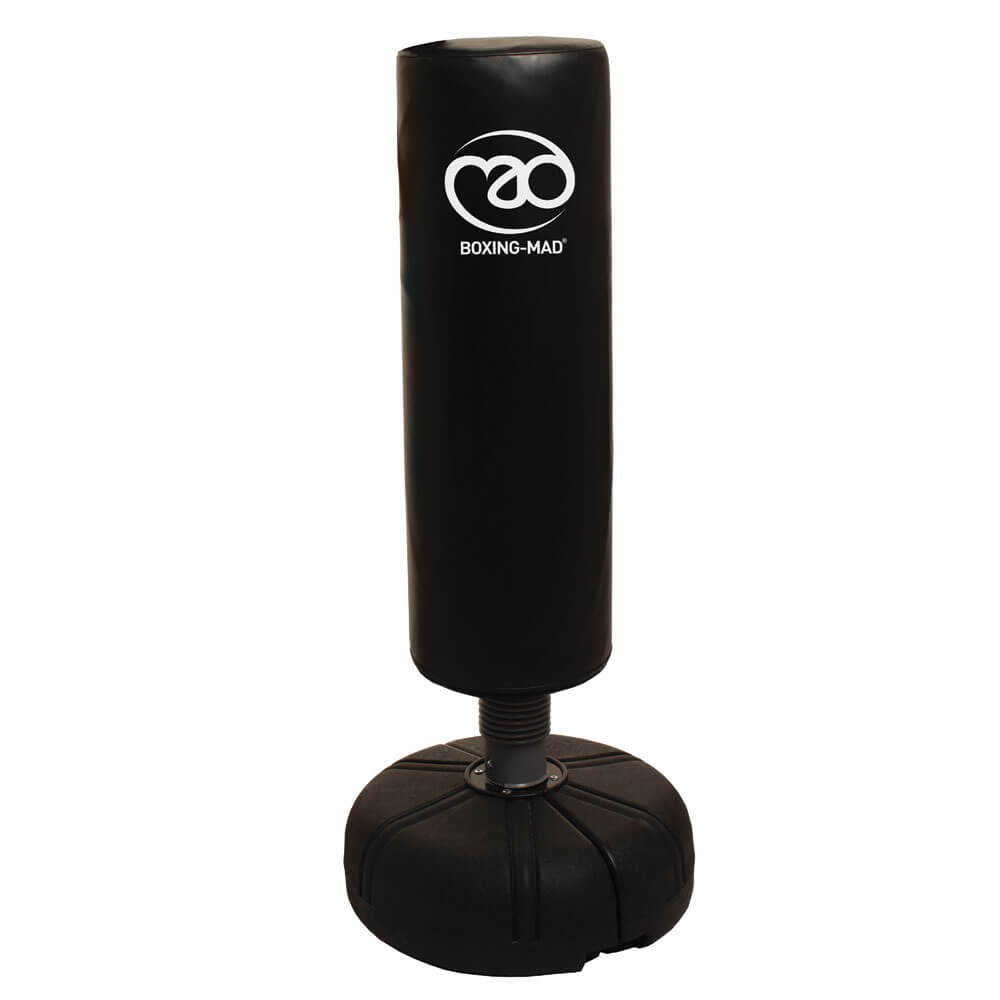What Muscles Do Lat Pulldowns Work?
Your lats are a notoriously hard muscle group to hit effectively. Simple exercises like rows technically hit your lats, but it’s a little too easy to dump weight to other parts of your body if you aren’t careful.
The lat pulldown is a great isolated exercise that fires up your lats as well as a host of muscles in your upper and mid-back.
Pull-ups are the holy grail of lat exercises, but they are insanely difficult. I often hang off of the pull-up bar like a wet noodle after only a few reps.
One day, I’ll be able to conquer the pull-up bar, but until that day comes, the lat pulldown machine is my bread and butter for building strength in this very stubborn muscle group!
What Muscles Do Lat Pulldowns Target?
The beauty of the lat pulldown is that it isolates your lat muscles. Engaging in this lift in a seated position with your legs disengaged isolates your lats like no other lift can.
There are plenty of ways to cheat your lats out of a good workout with exercises such as rows and pullovers, but with the lat pulldown machine, those finicky lat muscles have nowhere to hide!
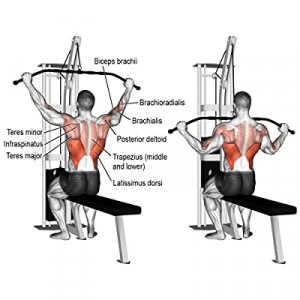
However, your lats aren’t the only things engaged when performing this lift. It also works your posterior deltoids (the back of the shoulders) and all of those little muscles in your upper back.
With a few variations, you can hit other muscles in your upper body, including your biceps!
Lat Pulldown Variations
Small variations in your grip can make all of the difference in the world. By changing up your grip, bar path, or even the position of your body can activate a host of muscle groups in your upper back, lats, and even your shoulders.
Also, if you aren’t quite feeling the burn in your lats with the standard movement, it may be time to look into a variation.
Some killer lat pulldown variations include:
1. Wide grip. A wide-grip pulldown is my jam! It may feel a little odd at first, but nothing quite isolates the lat muscle like a wide grip—the wider your grip, the more isolated that this lift becomes.
Be sure to tinker around with your weight a bit before engaging in a wide-grip lat pulldown. If you go too heavy, you risk dumping the weight on your shoulders in a very awkward way.
2. Standing Straight-Arm Pulldown. If you find that the muscles in your biceps and triceps are engaged too much while doing this lift, get up off of that seat!
A standing straight arm pulldown requires users to keep their arms completely straight and pull the bar down to their thighs. Be sure to keep your core tight and your body stiff to avoid dumping the weight onto your lower body.
3. Close Grip: If you ever feel that your lats are being neglected, a close grip lat pulldown is another great alternative. Swap out the bar for a V-Bar.
V-Bars are traditionally used for tricep exercises but are great at isolating lats on a lat pulldown machine. Keep your body as upright as possible, and slowly pull the bar down to your chest.
4 Common Mistakes
Just like with rows, it’s easy to cheat when it comes to lat pulldowns. Any isolated lift requires pinpoint accuracy and proper form, and it’s still pretty easy to cheat your lats out of a good workout.

Below, I’ve gathered some of the most common mistakes I’ve seen when engaging in this lift.
1. Not engaging in a full range of motion. I’ve seen many lifters bonk the top of their head before raising the bar back up, and this does nothing for your lats!
A full range of motion means bringing the bar down to your clavicle, squeezing the bar at the bottom of the lift before slowing moving the bar back to the starting position.
2. Jerking the bar down. Don’t do this! If you are doing seat lat pulldowns, your butt should never leave the seat. You should maintain 100 percent control over the bar throughout the entire lift.
3. Going too heavy. If you feel inclined to jerk the bar down to get it moving, you may be loading too much weight on the bar.
Weightlifters often want to load up as much weight on the bar as possible (I’m certainly guilty of this), but while you may be inflating your ego, you are robbing your lats of a good workout. Know when to drop weight!
4. Rolling Your Shoulders. Proper form requires an arched back throughout the entirety of the lift. When you start to fatigue, your shoulder will want to naturally roll forward to squeeze out those last few reps.
It may be tempting to cheat your way to 10 reps, but knowing when to stop is important. Rolling your shoulders forward not only robs your lats, but it could potentially cause damage to your shoulders.
Pull-Ups Vs. Lat Pulldowns
Bodyweight pull-ups are, hands down, the perfect exercise to work your lats. The downside to pull-ups is that they are insanely challenging. Knocking out one or two good-quality pull-ups may feel great, but that rep range isn’t nearly enough to yield any real results.
If you can knock out 10-20 pull-ups per set, stick with pull-ups! If you aren’t quite ready for a full pull-up routine, hitting up the lat pulldown machine is one of the very best ways to strengthen your lat muscles.
Overall, there is no better exercise to isolate those lat muscles than the lat pulldown machine. Be sure that you always engage in proper form and know what weight works best for you.
After a few weeks of a lat pulldown routine, jump on that pull-up bar to gauge your progress!

